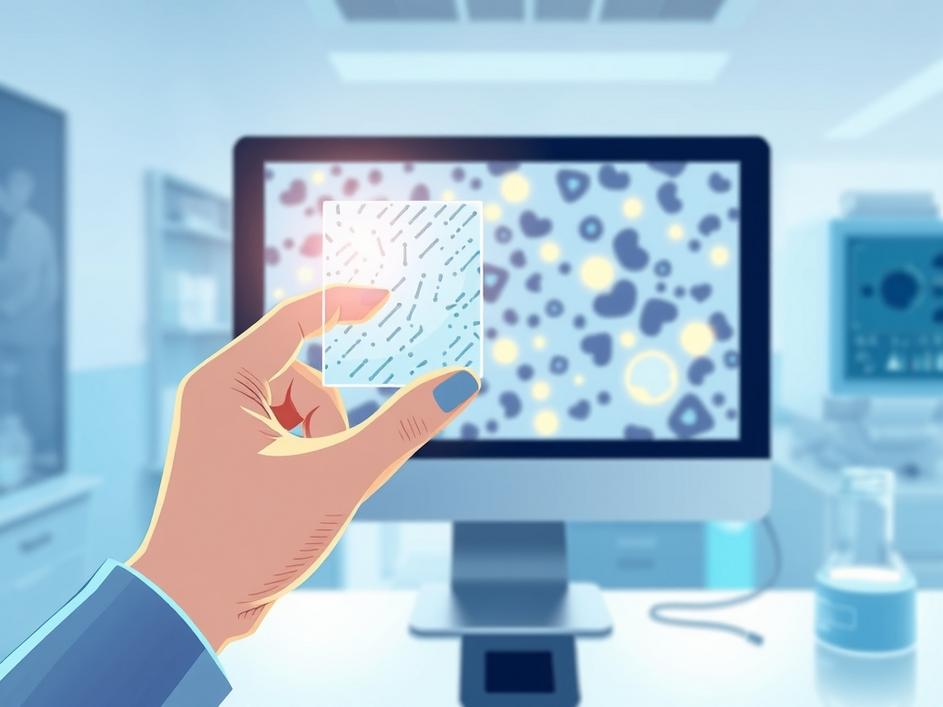


We are a digital agency helping businesses develop immersive, engaging, and user-focused web, app, and software solutions.
2310 Mira Vista Ave
Montrose, CA 91020
2500+ reviews based on client feedback

The world of medicine always looks for new ways to get clearer answers, faster. When it comes to finding serious health issues early, speed and accuracy count a lot. That\’s why news about companies working together to make diagnostic tests better is always important. Recently, AIxMed, a company known for using artificial intelligence in medical tests, teamed up with PathNet, a big name in lab services. Their goal? To bring smarter, AI-powered tools to something called urine cytology. This partnership aims to change how doctors look at urine samples, especially when they\’re trying to spot diseases like bladder cancer. It’s a big step for digital pathology, which uses computers to look at medical images. We\’ll talk about what this means for patients, doctors, and the future of healthcare.
What's Included?
ToggleThink about a doctor trying to find tiny clues in a sample, like looking for a needle in a haystack. That\’s a bit like what happens with urine cytology. This test involves examining cells found in a patient\’s urine under a microscope. Doctors do this to check for unusual cells that might point to conditions such as bladder cancer. It\’s a really important test because finding cancer early often leads to better outcomes. But it’s also a challenging job. Pathologists, the specialized doctors who do this, spend a lot of time carefully looking at slides. The cells can look very different from person to person, and sometimes it\’s hard to tell harmless cells from those that are a cause for concern. This means the process can be slow, and it needs a very experienced eye. Catching every suspicious cell and avoiding false alarms is a huge responsibility. It’s clear that any tool that can help these experts do their job even better would be a big deal for patient care.
This is where AIxMed comes in with its smart technology. Instead of a human eye having to scan every single cell on a slide, AIxMed\’s system uses computer programs to do a first look. Think of it like giving a very capable helper to the pathologist. This AI system learns from many images of urine cells. It recognizes patterns that human eyes might miss, or might take longer to spot. It can quickly show areas on a digital slide that look unusual, sending the pathologist\’s attention right to the important parts. This does not mean the AI makes the final diagnosis. Not at all. What it does is speed up the process of finding possible problem areas. It helps the pathologist\’s review be quicker and more thorough. It helps them focus their expert knowledge where it’s most needed, reducing the chance of missing something important because there are so many cells to check. This kind of help can truly improve how fast and well critical decisions are made.
Now, having this cool AI technology is one thing, but getting it into the hands of doctors and patients is another. That’s where PathNet comes into play. PathNet is a leading diagnostic laboratory, meaning they are the ones who process many of the medical samples doctors send in. By teaming up with AIxMed, PathNet can now offer this advanced AI-powered urine cytology service. For labs like PathNet, adopting new technology like this means they can handle more samples more efficiently. It also means they can potentially deliver results back to doctors faster. Imagine a doctor waiting for test results to decide on a patient’s treatment plan. Getting those results sooner can be really helpful. This partnership is all about making the diagnostic journey smoother, from the moment a sample arrives at the lab to when the doctor receives a clear, accurate report. It\’s about making the system better, faster, and more reliable for everyone involved.
This partnership isn\’t just about urine tests. It points to a bigger change in medicine. “Digital pathology” means that instead of looking at physical glass slides under a microscope, pathologists can now view sharp digital images of those slides on a computer. This makes it easier to share images, talk to other experts anywhere, and keep patient records better. Adding AI to this digital setup takes it to the next step. I see this as a clear growth for medicine. Just like digital cameras changed photography, digital pathology is changing how we look at cells. AI works as a clever analytical tool within this digital setup. It helps lessen the heavy workload on pathologists, who are often very busy. It also adds a layer of clear, objective checking, working alongside human experts. This kind of step forward can help make results more consistent. This means more consistent test quality across labs. It’s a big step towards making good quality tests easier to get and more reliable everywhere.
It\’s important to remember that tools like AIxMed’s technology are built to help, not to take over from, highly skilled medical professionals. Pathologists have years of training and experience; they understand the small details of disease and can put findings into context. AI can quickly scan and flag things, but it does not have the full understanding a human doctor possesses. This partnership is a great example of how people and AI can work well together. The AI handles the repeated, time-consuming tasks of going through countless cells. This frees up the pathologist to focus on understanding the tricky cases and making important choices. It means pathologists can spend more time on cases that really need their deep thought, and less time on the routine stuff. For patients, this means potentially faster diagnoses, and the comfort that their sample has been looked at with the help of the best tools available. It shows a future where technology makes human work even better, making healthcare stronger and more exact.
The collaboration between AIxMed and PathNet to bring AI-powered tools to urine cytology is a clear sign of where modern medicine is headed. It shows a commitment to making diagnostic tests more accurate, faster, and ultimately, better for patients. By using artificial intelligence to help pathologists look at urine samples, they are tackling a real challenge in early disease detection. This isn\’t about science fiction; it\’s about practical applications that make a difference in people\’s lives right now. It means clearer answers for doctors, quicker peace of mind for patients, and a step forward for the entire field of digital pathology. As technology keeps getting smarter, we can expect more of these partnerships. They will push the limits of what’s possible in healthcare, making our diagnostic journey more robust and reliable.



Leave a reply